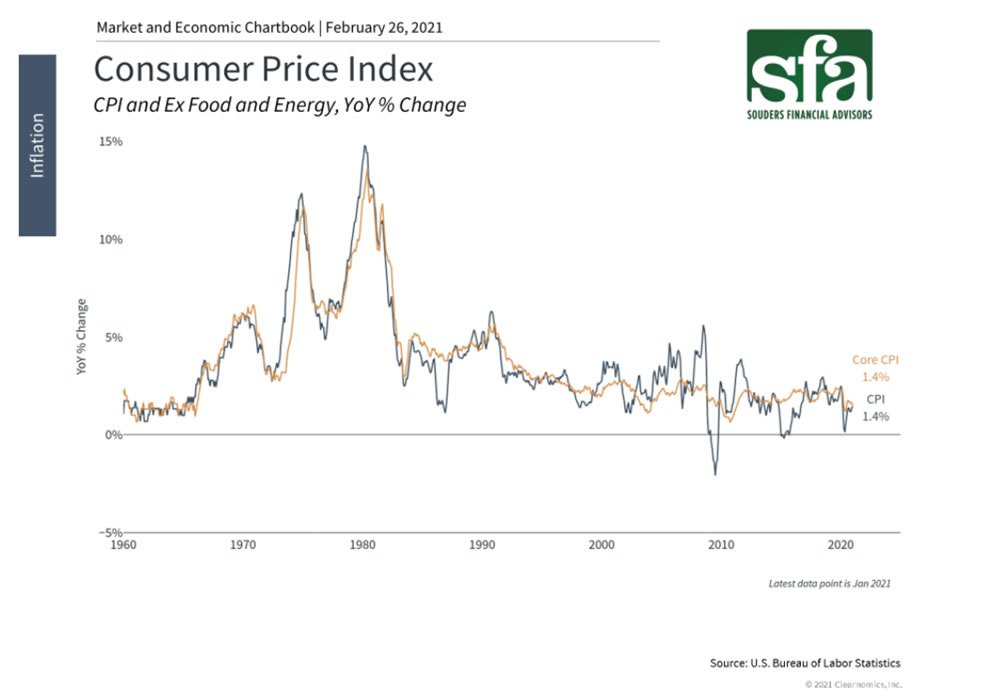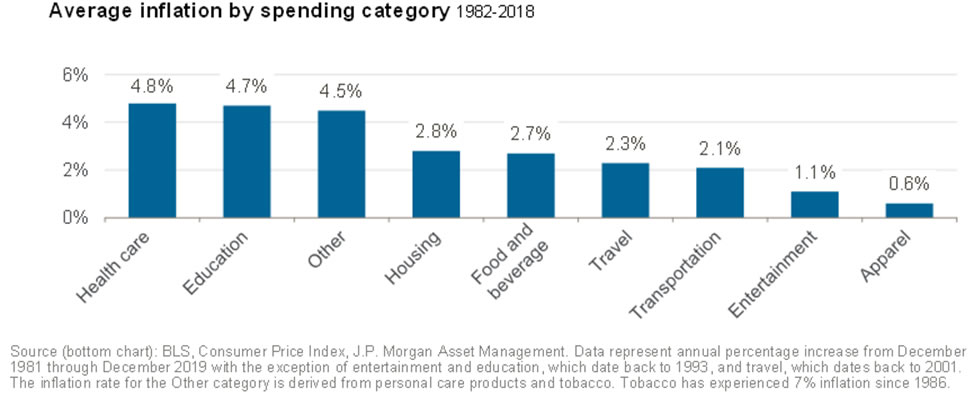
What Is Up with Inflation?
If you have been tuning into financial news or reading the Wall Street Journal lately, you may have noticed the word “inflation” appearing quite often in the past few months. The long period of low interest rates and the influx of stimulus has investors anticipating that inflation may be inevitable. We hope to help you understand what inflation is and how it affects you and your financial plan: Inflation, put simply, is the decline of purchasing power in a currency over time. Inflation is a key component to the Time Value of Money concept that “a dollar today is worth more than a dollar tomorrow”. Economists measure inflation in many different ways, but the most tangible to our everyday lives is the Consumer Price Index (CPI). CPI is a basket of goods and services that the Federal Reserve and US Bureau of Labor monitors for price fluctuations over time. The chart below illustrates CPI inflation over time. After experiencing hyper-inflation in the 1980’s, CPI has declined and has been relatively low for the past decade.

There are over 200 items monitored in CPI, but they can be broken up into 8 major groups (food and beverages, housing, apparel, transportation, medical care, entertainment, education, and other goods and services). The chart below is from JP Morgan’s Guide to Retirement and it depicts the average annual inflation by spending category

In our financial plans, inflation is an important consideration when planning for a future financial goal. Using an average inflation rate in planning can tell us what we think we must earn on our investment in order to keep up with the value of a dollar today. The return we achieve above inflation is called real return.
In a low interest rate environment, where the 10-year treasury has been hovering well below the average inflation rate, investors have had to get creative with earning real return on their investments. Inflation has historically been detrimental for bond markets and has had mixed impacts for stock market returns. However, fixed income will likely still provide stability to portfolios in difficult market environments. Sticking with the most appropriate asset class allocation in order to achieve long-term goals is still the primary challenge for investors today.
The bottom line is that investors should remain patient and disciplined as the market adjusts to the economic recovery. Maintaining a proper portfolio mix to achieve long-term financial goals should continue to be the main focus.

